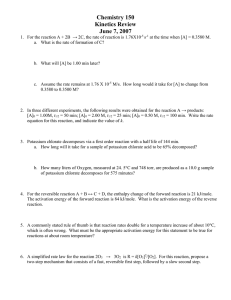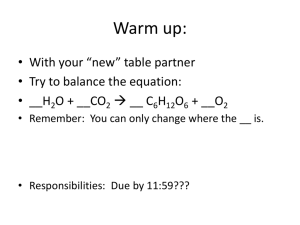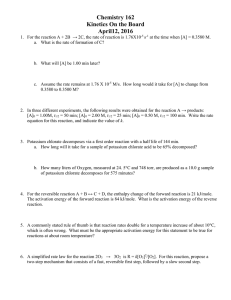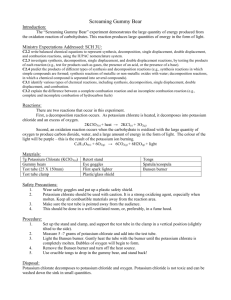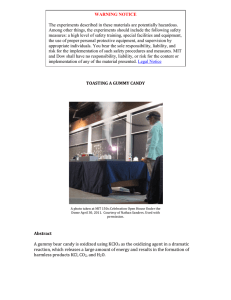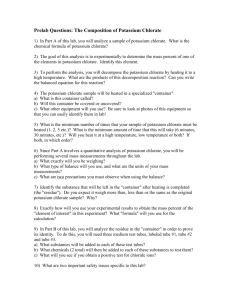Karyn Booy - Cellular Respiration - ESCI-350-Winter-2014
advertisement
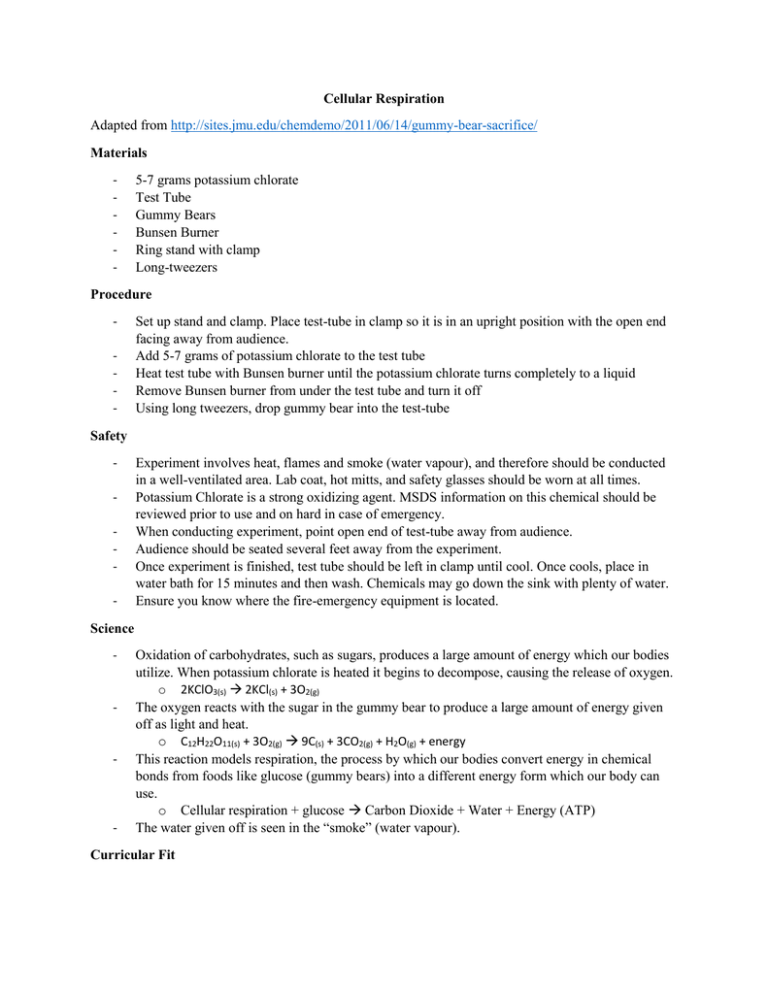
Cellular Respiration Adapted from http://sites.jmu.edu/chemdemo/2011/06/14/gummy-bear-sacrifice/ Materials - 5-7 grams potassium chlorate Test Tube Gummy Bears Bunsen Burner Ring stand with clamp Long-tweezers Procedure - Set up stand and clamp. Place test-tube in clamp so it is in an upright position with the open end facing away from audience. Add 5-7 grams of potassium chlorate to the test tube Heat test tube with Bunsen burner until the potassium chlorate turns completely to a liquid Remove Bunsen burner from under the test tube and turn it off Using long tweezers, drop gummy bear into the test-tube Safety - Experiment involves heat, flames and smoke (water vapour), and therefore should be conducted in a well-ventilated area. Lab coat, hot mitts, and safety glasses should be worn at all times. Potassium Chlorate is a strong oxidizing agent. MSDS information on this chemical should be reviewed prior to use and on hard in case of emergency. When conducting experiment, point open end of test-tube away from audience. Audience should be seated several feet away from the experiment. Once experiment is finished, test tube should be left in clamp until cool. Once cools, place in water bath for 15 minutes and then wash. Chemicals may go down the sink with plenty of water. Ensure you know where the fire-emergency equipment is located. Science - - - - Oxidation of carbohydrates, such as sugars, produces a large amount of energy which our bodies utilize. When potassium chlorate is heated it begins to decompose, causing the release of oxygen. o 2KClO3(s) 2KCl(s) + 3O2(g) The oxygen reacts with the sugar in the gummy bear to produce a large amount of energy given off as light and heat. o C12H22O11(s) + 3O2(g) 9C(s) + 3CO2(g) + H2O(g) + energy This reaction models respiration, the process by which our bodies convert energy in chemical bonds from foods like glucose (gummy bears) into a different energy form which our body can use. o Cellular respiration + glucose Carbon Dioxide + Water + Energy (ATP) The water given off is seen in the “smoke” (water vapour). Curricular Fit - HS20-NM1 Analyze the biochemistry, including the metabolism, of the macronutrients (i.e., carbohydrates, lipids and proteins, including enzymes) within the human body.
